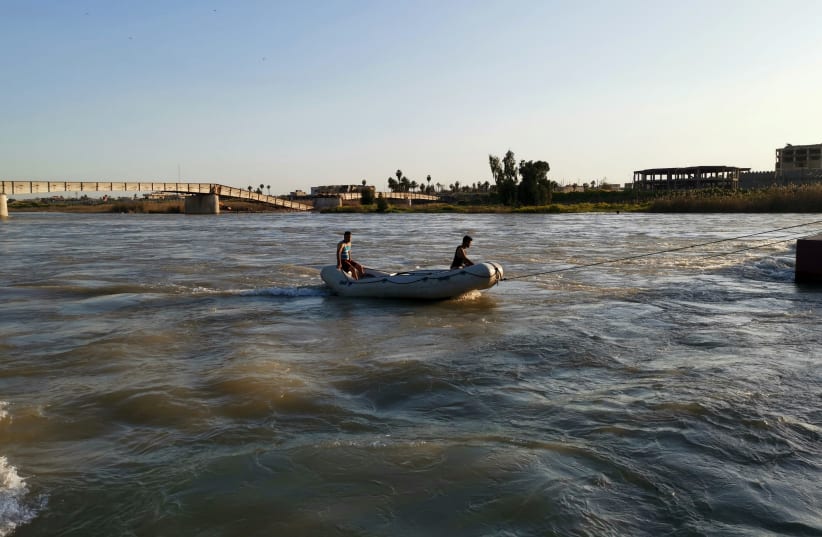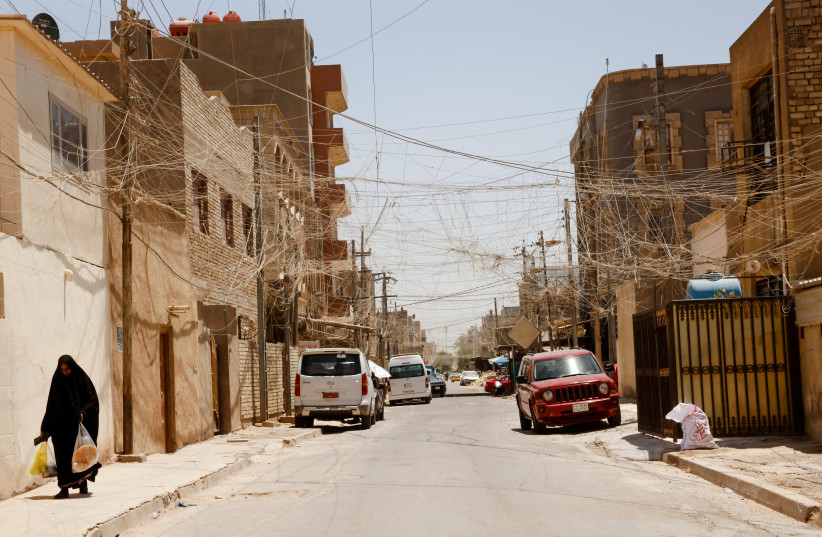Heavy rains in mid-February have raised the levels of the Tigris and Euphrates rivers in Iraq by 1.5 to 3 meters, saving agricultural crops and restoring relative life to the Ahwar marshland region in southern Iraq after more than 14 years of drought.
The Iraqi Water Resources Ministry announced in a statement that the water levels in rivers and storage systems had risen because of the rains, the heaviest of which fell in the northern and eastern regions of the country.
“The rains led to an increase in water levels in the tributaries of the Tigris River, and some areas in the east of the country were exposed to floods, which was reflected in an increase in the country’s water reserves, allowing it to be used within the framework of securing the needs for the next summer season,” the ministry said.
Pictures and videos circulated through Iraqi social media channels showed the rise in the Tigris River levels and that some entertainment facilities built on the river had been submerged. Pictures and videos also showed the return of water in the Ahwar region.
As well as the long drought, Iraq has been facing a severe water crisis because of the construction of dams by neighboring Turkey to its north and Iran to its east. The dams have reduced water flow and have greatly affected the Tigris and Euphrates rivers, the most important water sources in the country, which are normally fed by rain and melting snows that flow into Iraq annually from Turkey and Iran. In recent years, a significant and unprecedented decline in water flow has been clear in both the Euphrates and the Tigris, and tributary rivers and lakes have dried up in several governorates.
The Iraqi Agriculture Ministry said in a report in 2022 that the water shortage had caused the area of desertified land in Iraq to reach some 27 million dunums (27,000 square kilometers), about 6% of the country’s area.
“Approximately 55% of the area of Iraq is considered threatened land desertification,” the report said.
In 1997, Iraq and Syria, through which the two rivers also flow, signed the United Nations Framework Convention on Non-Navigable Transboundary Rivers, but neighboring Turkey and Iran did not implement the agreement.
Karar, a worker in the Beiruti Café in Baghdad, which overlooks the Tigris River, told The Media Line that the café was recently flooded by rising waters, and that other cafés along the river were also flooded.
“All these cafés were established on the banks of the river. The water rose to more than 2 and a half meters,” he said.
Overconsumption
Ali Karim, an engineer at the Water Resources Ministry, told The Media Line, “Water levels in reservoirs and dams have reached historic levels. We have not seen these levels for several decades.”
Karim said that while Iraq normally receives 18.1 million cubic meters of water daily, it consumes more than 19.4 million cubic meters daily, resulting in falling water levels until the recent rains.
“The harsh weather conditions in Iraq, including record temperatures and lack of rainfall, have caused the expansion of arid areas and desertification, the decrease in agricultural land, land degradation, the increase in dust and sandstorms, and the loss of natural resources, as well as the economic crisis that has led to increased poverty, and increasing rates of internal displacement and external migration,” he said.
“We have the ability to absorb larger quantities of water, and it will also be used to revive Al-Ahwar within the requirements of UNESCO, to keep it on the World Heritage Register, after it suffered from drought during the past years. There are no new water projects, but what exists is sufficient. What was missing was the water itself, not the tanks.”
A source in the Agriculture Ministry told The Media Line, “We should not be too optimistic. Water will become scarce again. Iraq needs new water projects. There is a large increase in population, and there is a weakness in water resources, and no new projects have been installed for three decades.”
The source said Iraq had lost about 1,200 species of palm trees and more than 40% of agricultural crops.
“The situation may improve, but there is no guarantee of that,” he said. “Ninety percent of fish farms are unlicensed, the irrigation methods used are very old, and groundwater is very scarce. All of this must be resolved as quickly as possible.”
Ziad Al-Aswad, a water resources expert, told The Media Line, “The problem in Iraq is worsening. The issue is not only related to the lack of Iraq’s water share from Turkey and Iran, but there are unjust human activities that are depleting water in Iraq. There is a problem related to the old irrigation method, which relies on water pumps that draw water in large quantities to the fields, which means a huge depletion of water, with little benefit. There are also factories that were established on the rivers, and with political and administrative corruption on the banks of the two rivers, and they consume large quantities of water without accountability or oversight.”
Al-Aswad added, “The government must change its strategy and return to using treated water for irrigation. The current rains are seasonal, and will be consumed during the summer months, and we will return to square one. Binding international agreements must also be reached regarding Iraq’s share of the water flowing from Turkey and Iran, and activities must be prevented. They should support the farmers to change their irrigation method.”
Najeeb Al-Hawzawi, a farmer in the Ahwar region, told The Media Line, “I was planning to leave the area and head towards the city. I no longer have work, fish are scarce, and the harvest is weak. Now that the water has returned, we may be able to complete the agricultural season, but we do not know whether the crisis will return in the next seasons or not.”
In March 2023, Iraqi Prime Minister Mohammed Shia’ Al Sudani issued a statement saying that “7 million Iraqis have been affected by climate change. Climate changes, represented by rising temperatures, scarcity of rain, and increasing dust storms, threatened food, health, environmental, and community security, and pushed hundreds of thousands to flee.”
Iraq has launched a major initiative to plant 5 million trees throughout all its governorates, although it needs about 14 billion trees to reduce desertification, according to the Iraqi Environment Ministry’s report in 2022.

